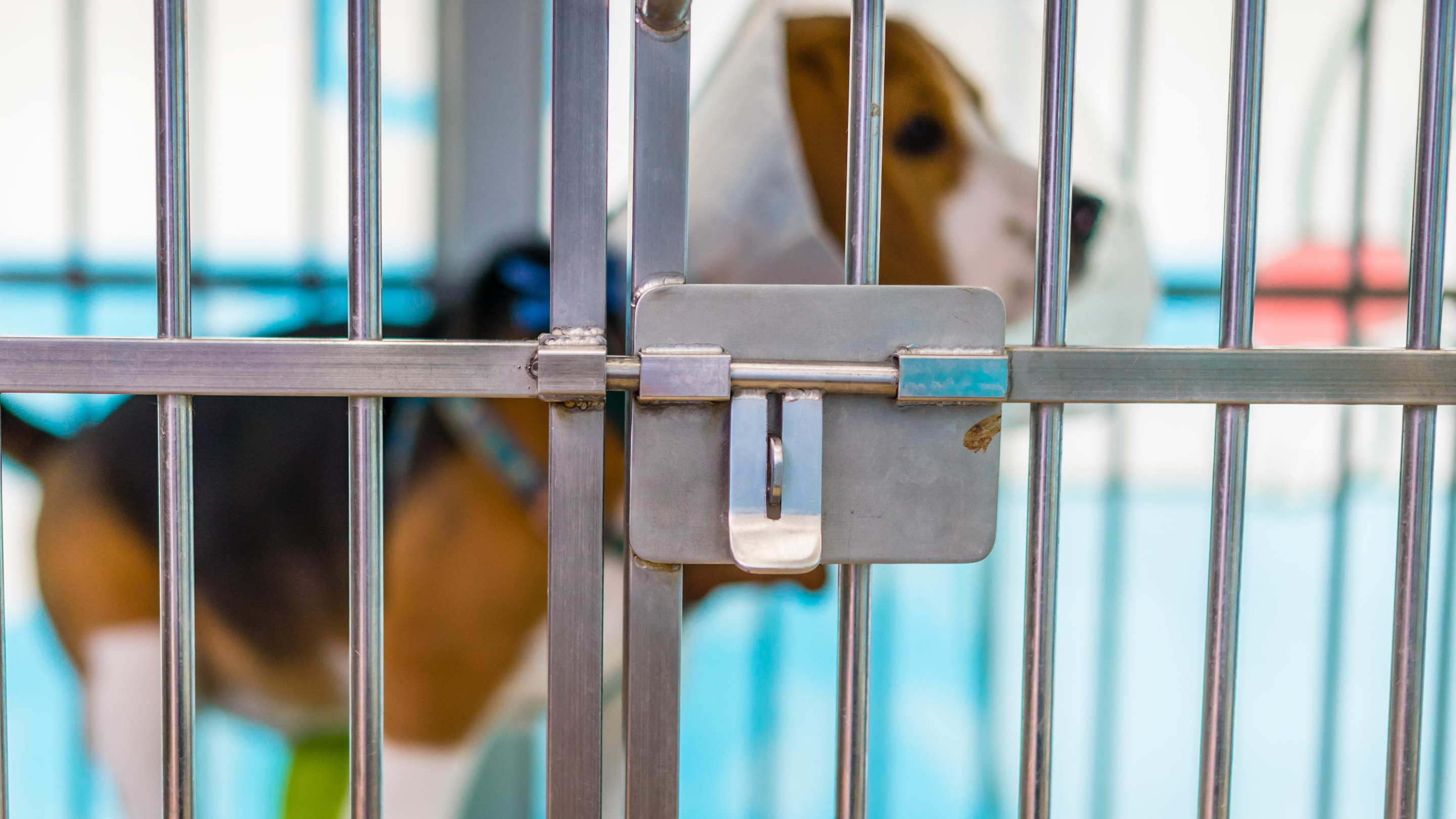
The vivisection industry cares more about their bottom line than the basic welfare of dogs in their lab.
Experiments on animals in labs are truly horrifying. Electrocution. Force-feeding. Injections. Drowning. Embalming alive.
But the horror doesn’t stop when the experiment does. The everyday existence for animals in labs is its own nightmare, and it’s one the industry has fought to make even worse.
Take for example, the Animal Welfare Act (AWA) exercise requirements for dogs. Instead of providing dogs with daily exercise, the Animal Welfare Act requires that their cages be merely twice as large as the bare minimum required.

So, how big does a cage have to be?
The official answer is a mathematical formula.

But what does this actually look like?

And it can be even worse. Dogs caged with other dogs don’t have to be exercised if the cage provides that bare minimum space for each dog. This means, in a double cage system like the one represented above, there could be two dogs and—under the law—they are still deemed to have enough room for “exercise.”
How can this possibly be allowed under federal law that is supposed to protect animals in labs? Because the animal experimenters fought hard for it. When Congress refined the AWA in 1985, the industry fought against a proposed amendment that would have required letting dogs out of their cages daily for exercise. They believed that it was just an expensive added cost. They didn’t even acknowledge that exercise would be good for the dogs! Check out this quote from an April 1986 article from the Associated Press:
“There are no scientific data which say any minimum exercise per day, or per week, is physiologically better,” says Frankie Trull, director of the National Association for Biomedical Research. “You just sleep better at night because you think if exercise is good for you, it must be good for the dog.”
I, for one, don’t think it takes a scientist to understand that dogs want and need exercise, and that life inside a cage is inherently cruel. We see what life in a cage does to dogs who are survivors and are provided a true home after their life in a lab. My own rescued pup, Ellie, took months to build her muscles up enough to walk more than a couple hundred feet, having atrophied so much from living in a cage without any exercise for years.
No matter what experiment they are used in, the daily existence for animals inside laboratories is hell. They need us to stand up for them every day, until there is no animal left in these small, barren cages.